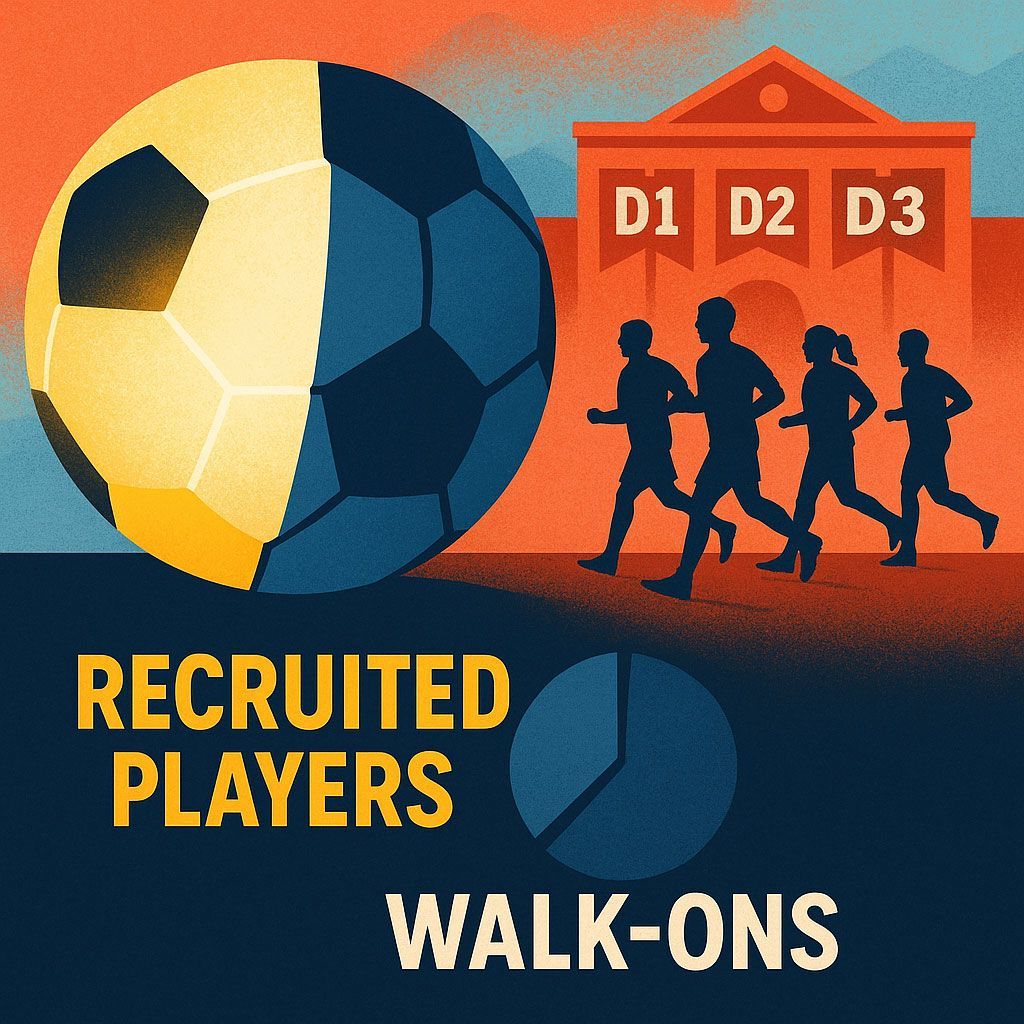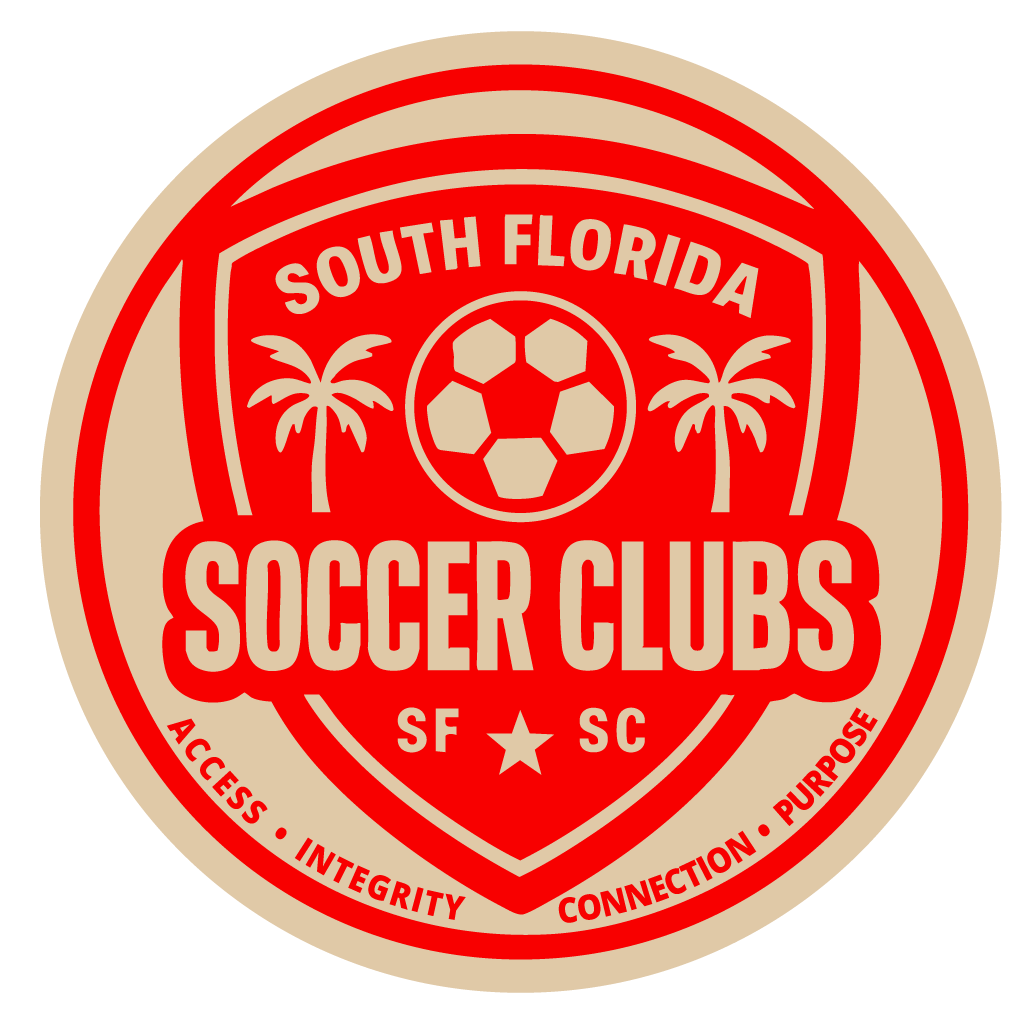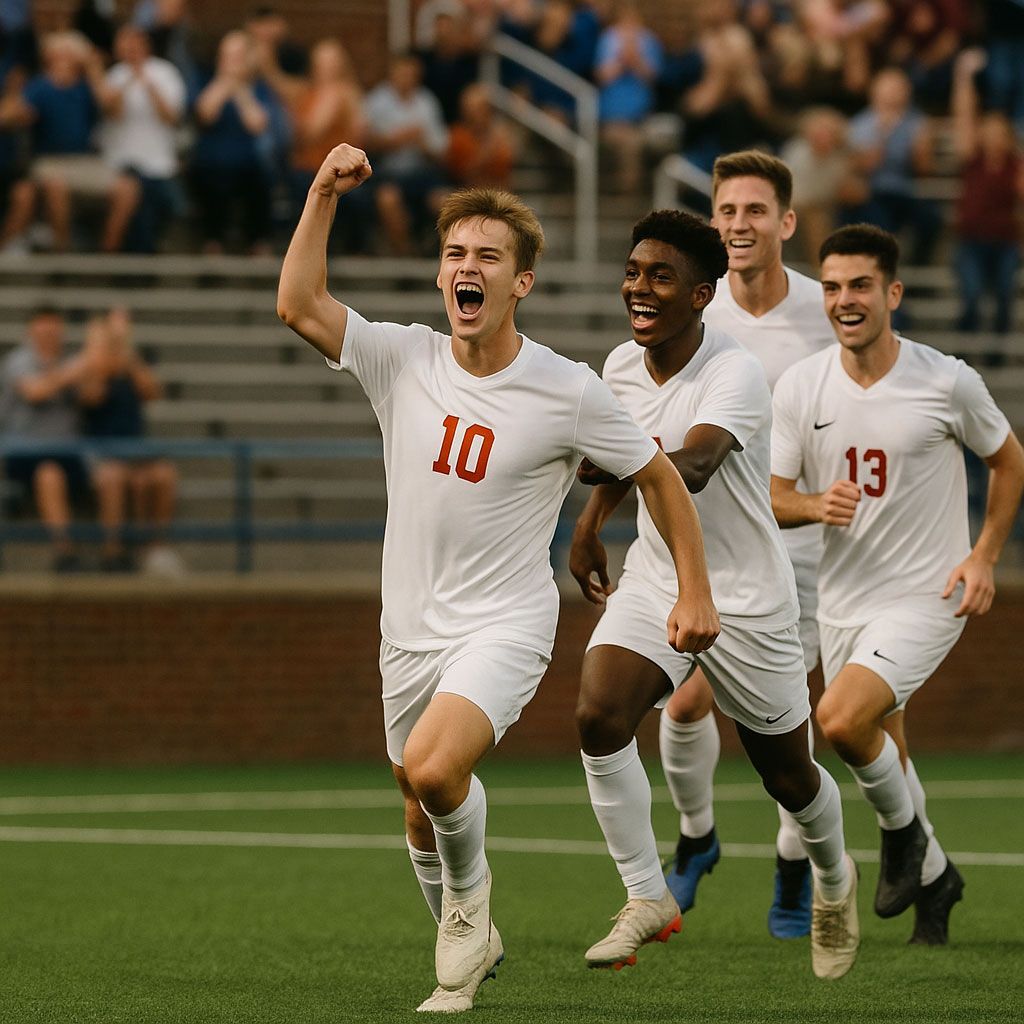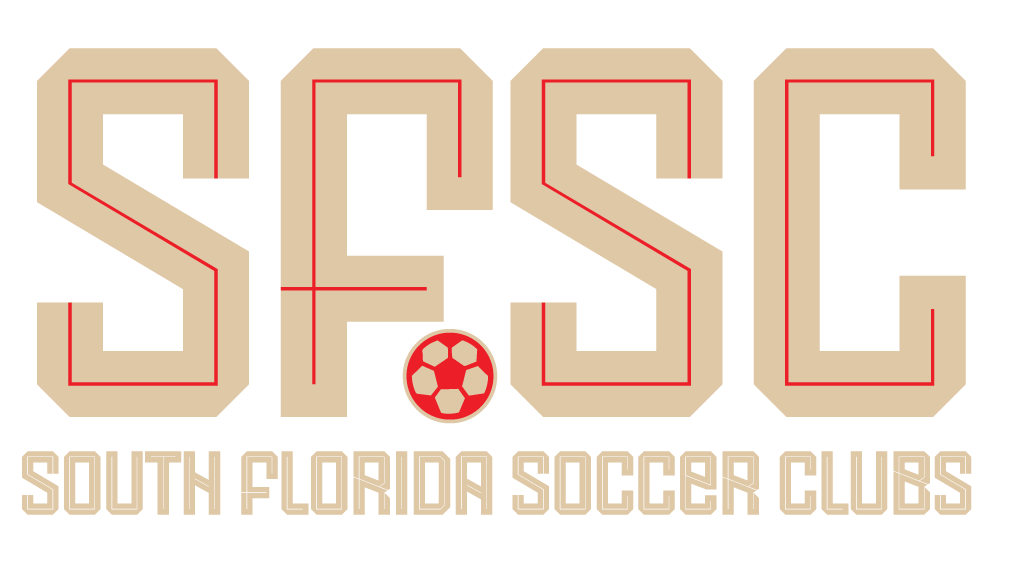Didn’t get recruited? You can STILL play college soccer. Here’s how.
So you didn’t get scouted or land an offer, but you’re still headed to college and still hungry to play. Great. There are several real pathways into college soccer (and beyond) that don’t require an early commitment. This guide breaks them down and gives you a practical action plan.
- Being unrecruited doesn’t shut the door. Nearly half of NCAA D1 soccer players earn their place without initial athletic aid, a strong reminder that colleges value fit and work ethic, not just recruitment status.
- At D2 and D3, walk-on opportunities may be even more common, though formal numbers aren’t available, the limited scholarships and heavy emphasis on walk-ons in these divisions suggest a significant share of rosters are filled this way.
- Overall: only a handful of high school players reach college teams, but among those who do, a substantial portion, especially in D1, weren’t recruited up front.

Walk-on (open tryouts) for the varsity team
Many NCAA programs hold campus walk-on tryouts early in the fall once school starts. Requirements vary by school, but a common baseline is that you must be enrolled full-time and meet academic-progress/eligibility rules. Example: Liberty University lists full-time enrollment plus class-standing GPA/hour requirements for walk-ons.
If you’re aiming at NCAA Division I or II, you must also have an account with the NCAA Eligibility Center (to certify your academics and amateurism). Division III domestic student-athletes generally do not register with the Eligibility Center.
Do this:
- Before arriving on campus, email the coaching staff with a one-page soccer résumé + 2–5 minute highlight video and ask about fall walk-on procedures and dates.
- Complete/confirm your NCAA Eligibility Center status if targeting D1/D2; check the school compliance page for tryout paperwork (physicals, insurance, sickle cell test, etc.).
Reality check: NCAA rules limit “tryouts” with prospects before enrollment, but once you’re a full-time student, programs commonly run campus tryouts to evaluate potential walk-ons. Policies vary, always follow the school’s compliance guidance.
Join your school’s Club Soccer (NIRSA) team and climb
Every large campus, and many smaller ones, fields competitive club teams that practice multiple times per week, travel, and play regional/national events under NIRSA. Most host open tryouts at the start of fall (and often spring). Schools like Boston College and JMU publicly post their tryout windows and expectations.
Club soccer is serious ball: it offers 3-5 training sessions/week and real competition, plus a path to NIRSA regionals and national championships each year. It’s also a great springboard to get noticed on your own campus.
Do this:
- At orientation/club fair, find “Men’s/Women’s Club Soccer,” add your info, and attend tryouts.
- Treat it like a varsity trial, arrive fit, bring your highlight link, and ask the captain/coach how they evaluate new players.
Consider the JUCO (NJCAA) route, then transfer
If you want immediate match minutes and another recruiting window, junior colleges can be a smart 1–2 year path, especially for late bloomers, international students, or players rebuilding their academic/athletic profile. The NJCAA publishes eligibility info and has dedicated NCAA transfer resources for moving to four-year programs.
Do this:
- Shortlist NJCAA programs (location, track record of transfers), contact coaches, and verify academic/transfer requirements using the NJCAA + NCAA transfer guides.
Keep the door open with the NAIA
The NAIA (a separate governing body from the NCAA) has hundreds of soccer programs and its own Eligibility Center (PlayNAIA). Late adds happen, and roster spots can be available deeper into the cycle than many NCAA programs. Every first-time NAIA student-athlete must register with the NAIA Eligibility Center.
Do this:
Create your PlayNAIA profile, send transcripts/test info, and proactively contact coaches about mid-cycle roster needs.
Use summer pre-professional leagues to showcase (and improve)
If you’re college-aged (or soon to be), USL League Two and the NPSL run May–July seasons populated by current college players. They’re scouted, and rosters are constantly refreshed via open ID sessions. League Two markets itself as a Path2Pro; NPSL routinely sees alumni drafted into MLS.
Teams publish open tryouts/ID days (example: Boston Bolts USL2 spring tryouts). Even one strong summer can change your stock with college coaches.
Understand the Divisions & scholarships
(so you aim right)
- NCAA D1/D2: register with the NCAA Eligibility Center; meet the 16 core-course rule/timeframe and amateurism. D2 also uses the EC; D1 standards are slightly stricter.
- NCAA D3: no athletics scholarships and, for domestic students, no Eligibility Center registration; schools set their own academic standards and support merit/need-based aid.
- NAIA: separate system; register at PlayNAIA to be eligible.
- JUCO (NJCAA): different eligibility standards; great for playing time and four-year transfers later.
Your 90-day playbook (arriving on campus without an offer)
Before you arrive
- Email the staff (varsity & club). Share résumé + 2–5 min highlight link; ask for walk-on or club tryout info and required forms.
- Eligibility:
- D1/D2 → complete NCAA Eligibility Center steps; request amateurism certification.
- D3 → confirm the school’s admissions/eligibility standards.
- NAIA option → open PlayNAIA account.
- Fitness: arrive with match fitness, repeat sprints, position-specific work, and a ball-mastery routine.
- Paperwork: physical within 6–12 months, sickle-cell test or waiver, insurance, each school lists specifics (example pages often include these items).
Weeks 1–2 (on campus)
- Attend all posted tryouts (club and any varsity walk-on session).
- If varsity doesn’t work immediately, win a spot on the club roster and dominate training. Captains often communicate with varsity staff when a club player stands out.
Weeks 3–8
- Keep stat clips from club matches and full-match film.
- Train daily (club sessions + two self-led technical/strength sessions).
- Check in respectfully with the varsity staff (1 email per 3–4 weeks) with your progress clips, updated GPA, fitness metrics, and availability to help as a training player if they need depth.
Off-season / Summer
- Trial for a USL League Two or NPSL side; many announce tryouts in Feb–April for May–July seasons. This is a strong résumé line and keeps you sharp for the next campus tryout window.
What if you’re at the wrong competitive level?
- Playing time matters. If you can’t crack minutes after a full year, consider transferring to a better-fit program (D3, NAIA, or JUCO → four-year). Use official NCAA two-year/transfer guides to stay compliant.
Understand the Divisions & scholarships (so you aim right)
- NCAA D1/D2: register with the NCAA Eligibility Center; meet the 16 core-course rule/timeframe and amateurism. D2 also uses the EC; D1 standards are slightly stricter.
- NCAA D3: no athletics scholarships and, for domestic students, no Eligibility Center registration; schools set their own academic standards and support merit/need-based aid.
- NAIA: separate system; register at PlayNAIA to be eligible.
- JUCO (NJCAA): different eligibility standards; great for playing time and four-year transfers later.
Copy-and-paste email template to coaches
Subject: Walk-On Interest, [Your Name], [Position, Grad Year], Incoming [School] Student
Coach [Last Name],
I’m an incoming [freshman/transfer] at [School] studying [major]. I’m a [position] (5’10”, 165) from [club/high school], 2024–25 captain, [honors]. My 2:15 highlight is here: [link]. Full matches: [links].
I’ll be on campus [date] and would love to participate in your walk-on process. I’ve attached a one-page résumé and can complete any compliance/medical forms required.
Thank you for your time, excited to compete and prove I can help your training environment.
Best,
[Name] • [cell] • [email] • [Hudl/YouTube link]



